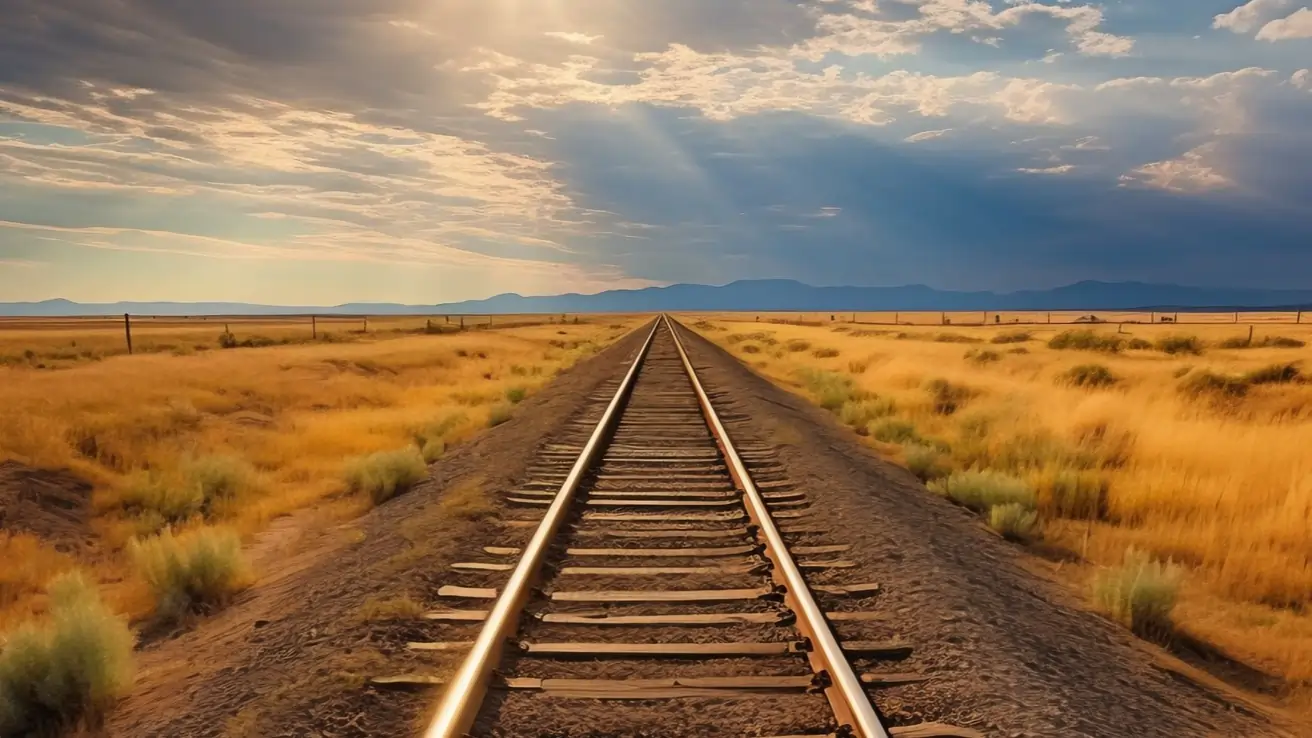Introduction: Why This Book Is So Important
The Underground Railroad by Colson Whitehead is a story that mixes history and imagination to tell something deeply real. It talks about slavery in America—not in a dry or boring way, but through the painful, personal journey of a young woman named Cora.
The story begins on a cotton plantation in Georgia and takes us across different states. But it’s not just about places. It’s about fear, pain, courage, hope, and survival. What makes The Underground Railroad different is that the author turns the real Underground Railroad (a secret escape route for enslaved people) into an actual underground train system. It’s a powerful way to show the danger and mystery of escaping slavery.
In this summary of The Underground Railroad by Colson Whitehead, we’ll talk about the story, its main ideas, and why it continues to move readers all over the world.
What Is The Underground Railroad About?
The novel tells the story of Cora, a young Black woman enslaved in Georgia. Life on the plantation is brutal. People are beaten, abused, and treated like property. Cora’s mother, Mabel, once escaped, and now Cora is alone, carrying the pain of that abandonment.
One day, another enslaved man named Caesar asks Cora to run away with him. At first, she says no. But after some horrible events, she changes her mind. That’s when their dangerous journey begins.
They run away using something called the Underground Railroad—but in this book, it’s not just a secret path. It’s a real train system, hidden under the ground, with tracks and tunnels and stations.
Every time Cora stops in a new state, she sees a new version of America. Some places seem better, others worse—but none are truly safe.
Main Characters in The Underground Railroad
Cora
The main character. She is strong, quiet, and brave. She changes a lot throughout the book—from someone who just wants to survive to someone who wants to live with dignity.
Caesar
Cora’s first travel partner. He believes in books and ideas. He dreams of a better world but doesn’t survive long enough to see it.
Ridgeway
The slave catcher. He represents how powerful people use rules and “logic” to control others. He is intelligent but cruel, and he follows Cora across many states.
Mabel
Cora’s mother. She is mostly a mystery until the end. Cora believes Mabel abandoned her, but the truth is more complicated. This shows how trauma can change how we see the past.
State by State: Cora’s Long Journey
Cora’s journey across different states is not just about moving from one place to another. Each state she visits shows a different kind of racism and a different side of America. Some places hide their cruelty behind false kindness, others are openly violent, and a few offer hope—only to take it away again. Through each stop, Cora learns, changes, and becomes stronger.
Let’s take a deeper look at every stop in Cora’s long, painful, and powerful journey in The Underground Railroad by Colson Whitehead.
1. Georgia – The Beginning of Pain and the Spark of Escape
Cora is born on a cotton plantation in Georgia. It’s a place full of violence and fear. The enslaved people work endlessly under the hot sun. They are beaten, starved, and treated worse than animals. White men control everything, and kindness is rare.
Cora’s mother, Mabel, once escaped the plantation. That choice haunts Cora—she feels abandoned and angry. Did her mother leave to find freedom? Or to leave her daughter behind? Cora doesn’t know.
After years of pain, a man named Caesar offers her a chance to escape. At first, Cora refuses. She doesn’t believe freedom is possible. But after she protects a younger boy and gets punished for it, she realizes she has nothing left to lose. She says yes.
Georgia, in this story, is the place where Cora’s pain begins—but it’s also where her hope begins. Her decision to run is the first bold step toward freedom.
2. South Carolina – A Beautiful Lie
When Cora and Caesar reach South Carolina, they are shocked. Everything looks peaceful. They are given clean clothes, jobs, food, and a small room to live in. Cora even starts working in a museum where she pretends to be part of a display about slavery. Tourists come to look at her like she’s part of history—even though her pain is still real.
At first, South Carolina seems like a dream come true. But Cora soon learns the truth.
The government is secretly sterilizing Black women without telling them. They are also using Black people in dangerous medical experiments. Everything is controlled—who they can marry, what jobs they can take, how they can live. Freedom here is an illusion.
South Carolina is a place that pretends to help but actually controls and uses Black people in new, quieter ways. It shows how racism doesn’t always look violent. Sometimes it wears a smile.
3. North Carolina – A Place of Pure Hate
Cora’s next stop is North Carolina—and it is a nightmare.
In this state, slavery has been completely outlawed, but not for moral reasons. The white people decided that having Black people at all was a “problem,” so they removed them entirely. Black people are not allowed to exist in North Carolina. If one is found, they are hanged in public and displayed on trees as a warning.
Cora is forced to hide in a small attic above a white couple’s home. She can’t leave, can’t talk, can’t even move much. From the tiny window, she sees people being executed regularly. The fear is constant. Every breath is a risk.
North Carolina is terrifying because it shows what happens when a society chooses genocide over equality. Cora experiences deep loneliness, silence, and terror here. She feels trapped—not just physically but mentally.
This part of The Underground Railroad by Colson Whitehead is haunting. It reminds us that even places that ban slavery can still be full of hate.
4. Tennessee – Fire, Sickness, and Slavery Again
After being found and captured by Ridgeway, the slave catcher, Cora is taken to Tennessee.
Tennessee is full of destruction. Forest fires have burned large areas of land. Disease has spread. Death is everywhere. It’s a broken place, and it reflects how broken Cora’s journey feels at this point.
Ridgeway is clever and cruel. He doesn’t hate Cora—he doesn’t really feel much at all. He just believes in “order,” and to him, that means returning all escaped enslaved people to their owners. He represents the cold system that keeps slavery alive.
During this part of the journey, Cora is chained again, controlled, and silenced. But inside, something stronger is growing: her will to survive. Even though she is trapped again, she has changed. She’s more aware. She knows she can’t stop now.
Tennessee is a place of fire and chaos, but also a test of her spirit.
5. Indiana – A Glimpse of Peace and the Dream of Freedom
Cora finally reaches Indiana and finds what looks like a real sanctuary: a large farm run by free Black people and white allies. It’s called Valentine Farm, and it’s a place of safety, education, farming, and debate.
Here, Cora is not a fugitive. She’s part of a community. People teach children, grow food, and have serious discussions about the future. Should Black people stay in America and fight for their rights? Or should they go somewhere else and start over?
For the first time, Cora begins to feel human. She rests. She thinks. She even starts to feel like she belongs.
But peace doesn’t last.
Ridgeway tracks her down again, and this time he brings violence. The farm is attacked. People are killed. Everything that felt safe is destroyed in moments.
Cora is forced to run once more. But this time, something inside her has changed. She fights. She escapes. She doesn’t just run away—she runs toward something.
Indiana represents a fragile dream. It shows what freedom could look like—but also how quickly it can be taken away.
6. The Road Ahead – The Future Is Unwritten
At the very end of the novel, Cora is on the road again. This time, she is alone. She has no guide, no train, no Caesar. She doesn’t know exactly where she’s going. But for the first time, she chooses her direction.
She walks toward the West—toward a future that is uncertain but hers.
This moment is powerful. It shows that Cora is no longer just running from slavery. She is moving toward her own life. Toward self-ownership. Toward real freedom.
The journey is not over, but Cora is now stronger, wiser, and more free than ever before.
What Is the Underground Railroad?
In real history, the Underground Railroad was a secret network of people—Black and white—who helped enslaved people escape to the North or to Canada. They used safe houses, secret signs, and trusted guides.
But in The Underground Railroad by Colson Whitehead, it becomes a real train system, with tunnels and platforms under the ground. This fictional idea adds mystery and power to the story. It shows how big and serious the escape from slavery was. It wasn’t just a walk north—it was a life-or-death journey filled with fear, hope, and faith.
Major Themes in The Underground Railroad
1. What Does Freedom Really Mean?
Freedom is not just running away from slavery. It’s the right to choose, to rest, to read, to feel safe. Cora learns that even in “free” states, Black people are still controlled. The novel asks us: Is freedom just the absence of chains? Or something much deeper?
2. Racism Comes in Many Forms
Some places hurt Black people openly. Others do it quietly. In South Carolina, people smile while secretly destroying lives. In North Carolina, they kill without hesitation. The Underground Railroad teaches us that racism can be violent—but it can also be silent, hidden, and dangerous.
3. The Pain That Doesn’t Go Away
Even when Cora escapes, her pain stays. She carries fear, loss, and guilt. She doesn’t understand her mother’s choices. She loses friends. This book shows that trauma doesn’t end with freedom. Healing takes time, and sometimes it never fully comes.
4. Resistance Takes Many Shapes
Some people fight with words. Others hide fugitives in their homes. Some just keep going, step by step. The Underground Railroad honors every kind of resistance. Cora’s survival is itself an act of rebellion.
Style and Language
Colson Whitehead’s writing in The Underground Railroad is serious, poetic, and sometimes very hard to read emotionally. He uses short, strong sentences mixed with deep thoughts. The book moves between past and present, between horror and hope.
His decision to turn history into a fantasy train system adds a dreamlike quality. It helps us feel the fear, mystery, and struggle of running from slavery in a fresh way.
Why You Should Read This Book
The Underground Railroad by Colson Whitehead is not just a story. It is a lesson, a warning, and a cry for justice. It asks hard questions: How do we remember the past? How do we survive pain? What is true freedom?
Yes, the book is painful. It shows beatings, loss, and heartbreak. But it also shows courage, friendship, and hope.
If you care about history, if you care about justice, or if you just want to understand the human spirit a little better—read The Underground Railroad.
It will stay with you.
What Do You Think?
Have you read The Underground Railroad by Colson Whitehead? Which part made you think the most? What did you learn from Cora’s journey?
Share your thoughts in the comments below. If you found this summary helpful, pass it along to a friend or classmate. Let’s keep the conversation going.
Must Read:
- The Book Thief by Markus Zusak
- A Tree Grows in Brooklyn by Betty Smith
- Pride and Prejudice by Jane Austen
- The Alchemist by Paulo Coelho
- Subtle Art: Your Best Self Help Guide
- The Little Prince by Antoine de Saint Exupéry




